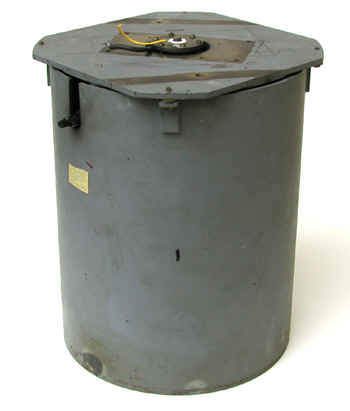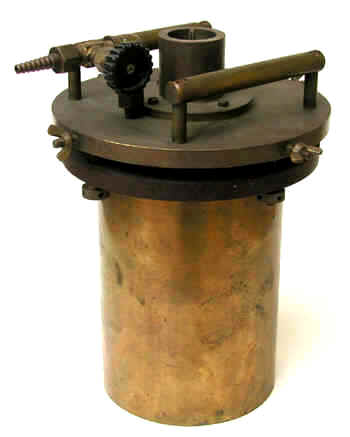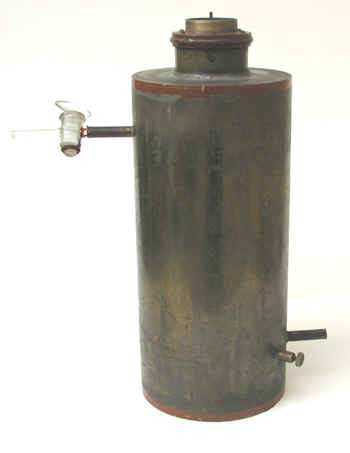Ion Chambers for the Analysis of Radon in Breath Samples
Analysis of Radon in Breath Samples
By the end of the 1920s, the medical community had become convinced that the premature deaths of many of the radium dial painters could be attributed to the radium-226 that had been incorporated into their skeletons. Around 1930 or so, concerted efforts began to quantify the activities of the internally deposited radium. Such measurements were complicated by the fact that the Ra-226 decayed into the noble gas radon-222, a large percentage of which was eliminated from the body by exhalation.
Measurements of radium content in the body were performed in two ways.
- Analyzing the radon concentration in the exhaled breath. This was done by transferring a breath sample into an ionization chamber. Either the current or pulse rate from the chamber was then related to the radon concentration. The latter could then be used to determine the activity of the radium in the body that decayed to radon that was exhaled.
- Measuring the gamma ray emissions from the body, essentially the gamma rays emitted by the radon decay products lead-214 and bismuth-214. The emissions from the decay products could be used to determine the activity of the radium in the body that decayed to radon that was retained in the body. These measurements were performed with, electroscopes, Geiger-Mueller detectors or ionization chambers.
The first method did not reveal how much radium decayed to radon that was not exhaled and the second method did not tell how much radium decayed into radon that was exhaled. At the time, it was assumed that 45% of the radon-222 produced by the decay of Ra-226 was exhaled.
In 1941, the National Bureau of Standards Handbook No. 27 (NCRP Report No. 5) set the permissible body burden for radium-226 at 0.1 uCi, a value soon adopted by the ICRP. This was equated by the NBS and the Department of Labor to 1 pCi of Rn-222 per liter of exhaled air.
As a check on worker exposures, some facilities required regular (every four to six months) analyses of breath samples. If a worker exceeded the tolerance level, he or she was transferred to non-radioactive work for up to a month. This would usually result in the elimination of 50 to 90% of the radium body burden. The breath samples were collected at the facility but the actual analysis was performed at a laboratory with the specialized equipment and expertise. Robley Evans at MIT was the first to perform these analyses. Later, similar measurements were performed at the National Bureau of Standards and Fordham University (Victor Hess).
The first measurements of radon in breath that I know of were conducted at Standard Chemical Company in Pittsburg (ca. 1920), but this was done to assess radon turnover rates rather than quantify radium in the body.
References
- Evans, Robley, Radium Poisoning II The Quantitative Determination of the Radium Content and Radium Elimination Rate of Living Persons, Am. J. Roentgenol. And Radium Therapy, 37: 368-378, 1937.
- Evans, Robley, Protection of Radium Dial Workers and Radiologists from Injury by Radium, J. Ind. Hygiene and Tox. 25 (7): 253-269, 1943.
-
Ion Chamber for Radon Analysis in Breath Samples Ion Chamber for Radon Analysis in Breath Samples

-
Ionization Chamber of Robley Evans Ionization Chamber of Robley Evans

-
Ionization Chamber of Victor Hess Ionization Chamber of Victor Hess

